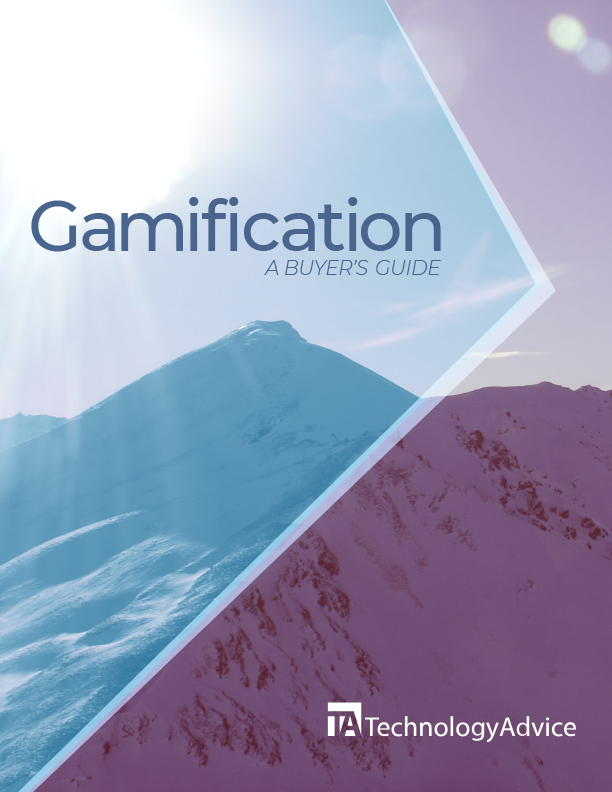This article is a guest contribution from Shawn Goldsmith, founder of Markarie, a sales and marketing consulting firm that specializes in demand generation, lead generation, and social selling solutions. Before Markarie, Shawn served as a demand gen manager at Bonitasoft and a social selling strategist at Oracle.
On a typical Monday, your sales team returns to the office to a backlog of emails, meetings, and calls, the same as always. And same as always, they are unexcited. They slog through tasks without enthusiasm, without ambition. The quality of their work and of the leads they handle is passable, at best.
Now imagine Monday morning begins with an announcement: an SQL qualification competition. Leaders will appear on monitors in corporate offices, and the winner will receive a steak dinner from the SVP of sales. Now your Monday starts looking more exciting, and your team has an immediate reason to perform well.
This is gamification — using game mechanics to motivate participants in a non-game context.
In my former role as a demand generation manager at an enterprise software company, I once used gamification to give a jolt to the company culture and productivity. We used gamified sales competitions to improve KPIs and foster a sense of friendly competition. As a result, our sales team increased their SQL (sales qualified lead) volume by 100 percent.
ALSO READ: 3 Creative Sales Contest Ideas and Why They Work
Incentive is just as important in the workplace as it is in our personal lives. Gamification can provide some of that incentive by creating a challenge-achievement-reward cycle in the office. Sales reps have the opportunity to “win” (both literally, within the confines of the game, and metaphorically, as you improve your performance), strengthen ties to their team, and gain new skills. Sales leaders also stand to win from increased lead volume and revenue.
Where is Your Sales Team Weak?
If you’re a director of sales and your team is underperforming, you’ve undoubtedly had some tense conversations with your SVP. But what are you doing wrong? You’re hiring strong performers, spending money on training and development, but still failing to missing your goals each quarter.
Here’s where you may be falling short:
“Dirty” Pipeline
If your team isn’t maintaining clean, accurate records of every interaction with a client, CRM hygiene will plummet, which leads to a clogged pipeline. But logging more detail takes time, and sharing information with the team may take away a salesperson’s perceived power. Unfortunately, this may cause good leads and accounts to fall through the cracks.
Arbitrary Goals
You may have quotas and annual performance targets, but each member of your team must have a clear idea of their individual contribution and the exact steps it will require. The most productive employee is one who envisions a goal, a timeline, and has the tools to execute.
Lack of Transparency
Sales thrives on competition, but when competition becomes rivalry, the results can be difficult to combat. If team members do not trust each other, if they try to outdo each other for praise or bonuses, if they are hiding information, the impact will be felt in every area of business. This extends to marketing as well. There may be competing metrics between the two teams that are clogging your CRM reports.
How Gamification Can Help
The right gamification program can help alleviate many of these problems. Aside from motivating your sales reps to perform better, gamification can improve data hygiene and transparency.
Gamification solutions are designed to reinforce nine important tenets:
- Fast feedback
- Transparency
- Goal-setting
- Evidence of accomplishment
- Status in a community
- Engaged learning
- Competition
- Collaboration
- Community-building.
Let’s unpack these a bit. As employees participate in a gamified workplace, they are constantly receiving feedback, both from their supervisor and their peers, in the form of points, progress bars, badges, and so on. Their success rate and understanding of where they stand will increase transparency, all the while providing “proof” that they are valued members of the team.
Furthermore, everyone engages in healthy competition but collaborates to create better workflows and a cleaner CRM. The more gamification progresses, the greater the skill of your salesman — practice makes perfect.
What’s the Incentive?
Here’s a tip: money isn’t everything. Sure, employees love a cash reward, but cash isn’t the only way to get them moving. The promise of qualitative rewards, non-cash prizes, or the perception of making progress is sometimes all it takes.
Gamification taps into our natural inclination toward competitive play. Some critics have noted that gamification doesn’t really change anything, only repackages work to look fun. But that is precisely its genius. We know that emails need to be answered, sales calls need to be made, CRM data needs to be updated, but we also know all of that will be there tomorrow and the day after that, so why do it now?
But if you can earn points and rewards, and if you can see your progress bar move from 0 percent to 50 percent and compare yourself to teammates . . . now there’s a reason to do work! You are making progress and being recognized for it.
If you can afford cash prizes, great. But don’t think gamification is out of your reach just because you can’t afford weekly gift cards.
Final Takeaways
Before you make the decision to invest in gamification software, consider these three questions:
- Do you have a plan for implementation? It is important to have realistic goals for gamifying. A plan for use and some idea of incentives will help smooth the transition to a gamified workplace.
- What can you afford? Like any other everything else, the more expensive options will have more features, sleeker designs, and more advanced support. Do some research and your adjust expectations to find the most cost-effective model for your organization.
- Is your gamification software compatible with your CRM? Some CRMs, like Salesforce, offer gamification plugins from an app store, while other vendors may require manual integration. Whatever you do, make sure you find a way to get your CRM and your gamification tool talking.
Once you have some answers, move forward. Gamification isn’t a bandaid for deeply flawed workflows or poor management, but the right solution can add a little motivation for your team, which could be the competitive edge you need.
Top Gamification Software Recommendations


